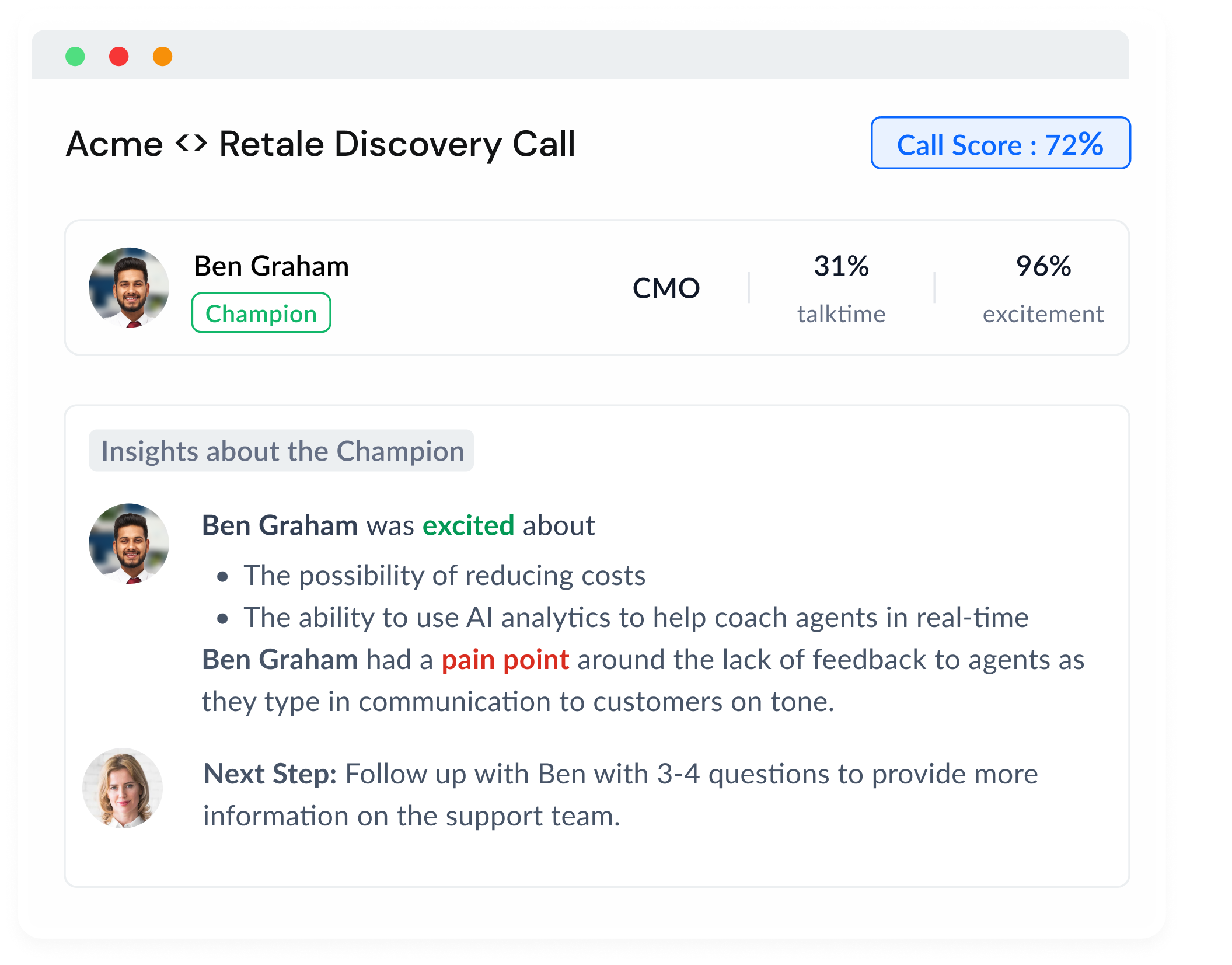Ah, post-trial negotiations. They're like that last, nail-biting scene of your favorite movie. The popcorn's been eaten, the soda's nearly gone, and you're on the edge of your seat, waiting to see how it all turns out. Will your plucky hero (your product) win over the tough, skeptical audience (your customer) and emerge victoriously in the spotlight? Or will the curtains close on a less-than-stellar note?. This is where you must put on a show that convinces the audience (the customer) that your product is the star they've been waiting for. But like any great show, it requires careful planning, rehearsal, and a touch of flair.
we will deep-dive into the labyrinth of post-trial negotiation calls, armed with the sword of strategy and the shield of empathy. We'll explore the importance of these calls in the grand tapestry of SaaS sales, break down their structure into digestible parts, and even reveal how our trusty sidekick, Sybill, can play a pivotal role in your negotiation narrative.
The Five Stages of a Successful Negotiation Call
Imagine you're the protagonist in an epic adventure movie. Each stage of the negotiation call is a crucial chapter in your journey, leading you ever closer to that climactic final scene.
Stage 1: Pre-Call Preparation
Before you embark on any adventure, you need a map. In our case, this map is made of insights about the customer's trial usage, their feedback, and potential negotiation points. It's the research you do, the knowledge you gather, that points you towards the hidden treasure - a successful deal .In the world of sales, arm yourself with knowledge, and you're already halfway to success.
Stage 2: The Opening Gambit
The start of the call sets the stage. Begin by reaffirming the value they've experienced during the trial. The initial moments of the call reaffirm the value the customer experienced during the trial, creating a positive resonance that carries through the entire conversation.
Stage 3: Navigating Objections
Objections are not barriers, but stepping stones towards understanding your customer's needs better. Listen, empathize, and address their concerns by demonstrating how your product can resolve them. Every objection is an opportunity to showcase the strength of your solution.
Stage 4: The Close
Closing the call is your chance to tie up all the threads woven during the conversation into a compelling tapestry that visually represents the value your product can bring to the prospect. Paint them a picture of success with your product at the heart of it.
Stage 5: Post-Call Follow-up
The call may end, but the conversation doesn't. A post-call follow-up serves as an encore, reinforcing the value proposition and addressing any residual uncertainties. This ensures that your product remains top of mind, and signals your ongoing commitment to meeting the customer's needs.
The Power of Empathy in Negotiation
In the grand theatre of negotiation, empathy is the spotlight that illuminates understanding. It allows us to see things from the customer's perspective, guiding us to a solution that benefits both parties. It's not just about standing in their shoes, but walking their path, feeling their strides, their stumbles, and their triumphs. Empathy is your trusty compass in the world of negotiations, guiding you to align with your customer's needs and perceptions.
Understanding Your Customer's Perspective
The first act in the play of empathy is understanding. To empathize is to understand. To understand their business, their pain points, their goals, and how your product fits into this landscape is to truly walk a mile in your customer's shoes. This means diving into the depths of the customer's business, feeling their pain points, appreciating their goals, and discerning how your product fits into this narrative. It's not enough to know the facts; you must comprehend the story behind them.
Consider your product as a character in your customer's play. How does it interact with the other characters (the customer's needs)? What role does it play in propelling the plot (the customer's business growth)? When you truly understand this, you're not just selling a product; you're casting a star that will take their story to new heights.
Empathy in Action
Empathy, when practiced right, can turn the negotiation tide in your favor. Empathy, when practiced skillfully, can transform the negotiation landscape. It's like an experienced director who can guide an actor (the salesperson) to a brilliant performance that moves the audience (the customer).
Imagine a customer expressing concern about the cost of your product. Without empathy, the response may be a defensive justification of the price. But with empathy, you acknowledge their budget constraints and then demonstrate the long-term value and ROI that your product offers, aligning it with their business goals.
In another scenario, a customer might be hesitant to change from their current solution. Instead of pushing your product features, use empathy to acknowledge the discomfort of change. Then, guide them gently to the potential benefits of your solution, building trust and understanding in the process.
In the grand act of negotiation, empathy is the script that, when followed, leads to a standing ovation - a successfully closed deal. It's not just a nice-to-have skill; it's the leading role in the performance of successful negotiation.
Leveraging Sybill in Negotiation Calls
In the grand symphony of negotiation, Sybill is the maestro orchestrating each movement to perfection. It's the AI-powered assistant that amplifies your performance, ensuring you hit all the right notes, every time. From conversation analytics to crafting impeccable follow-up emails, Sybill ensures you're always one step ahead in the game.
Sybill's AI capabilities go beyond simple call recording. It meticulously transcribes each conversation, creating a written record that can be reviewed and analyzed.
These transcriptions become a powerful tool for understanding your customer's needs, objections, and feedback. They enable you to revisit critical points in the conversation, ensuring nothing is lost in the ebb and flow of dialogue.
Generating Insightful Summaries and Follow-ups
Post-call, Sybill steps in as your diligent scribe, compiling comprehensive summaries and crafting effective follow-up emails. It's like having a dedicated librettist, penning the narrative of each negotiation, ensuring that the key themes are highlighted and the melody continues even after the call.
Guiding with Data-Driven Insights
Perhaps one of the most compelling aspects of Sybill is its ability to provide data-driven insights. It processes volumes of conversation data, identifying patterns, trends, and insights that can enhance your negotiation strategy. It's like the meticulous composer, refining each note and rhythm based on the audience's response to create a masterful symphony.
With Sybill in your corner, each negotiation call becomes a finely tuned performance. It's not just about closing a deal; it's about creating a negotiation masterpiece, where understanding meets strategy, and results resonate with success.
In conclusion, Sybill isn't just a tool; it's your negotiation ensemble, ready to perform at each call. So, step up to the podium, take the baton, and let Sybill guide your negotiation symphony to a standing ovation.
Conclusion
In the arena of SaaS sales, negotiation is your secret weapon. With the right preparation, strategy, and a dash of empathy, you can turn any negotiation call into a victory dance.















.png)





